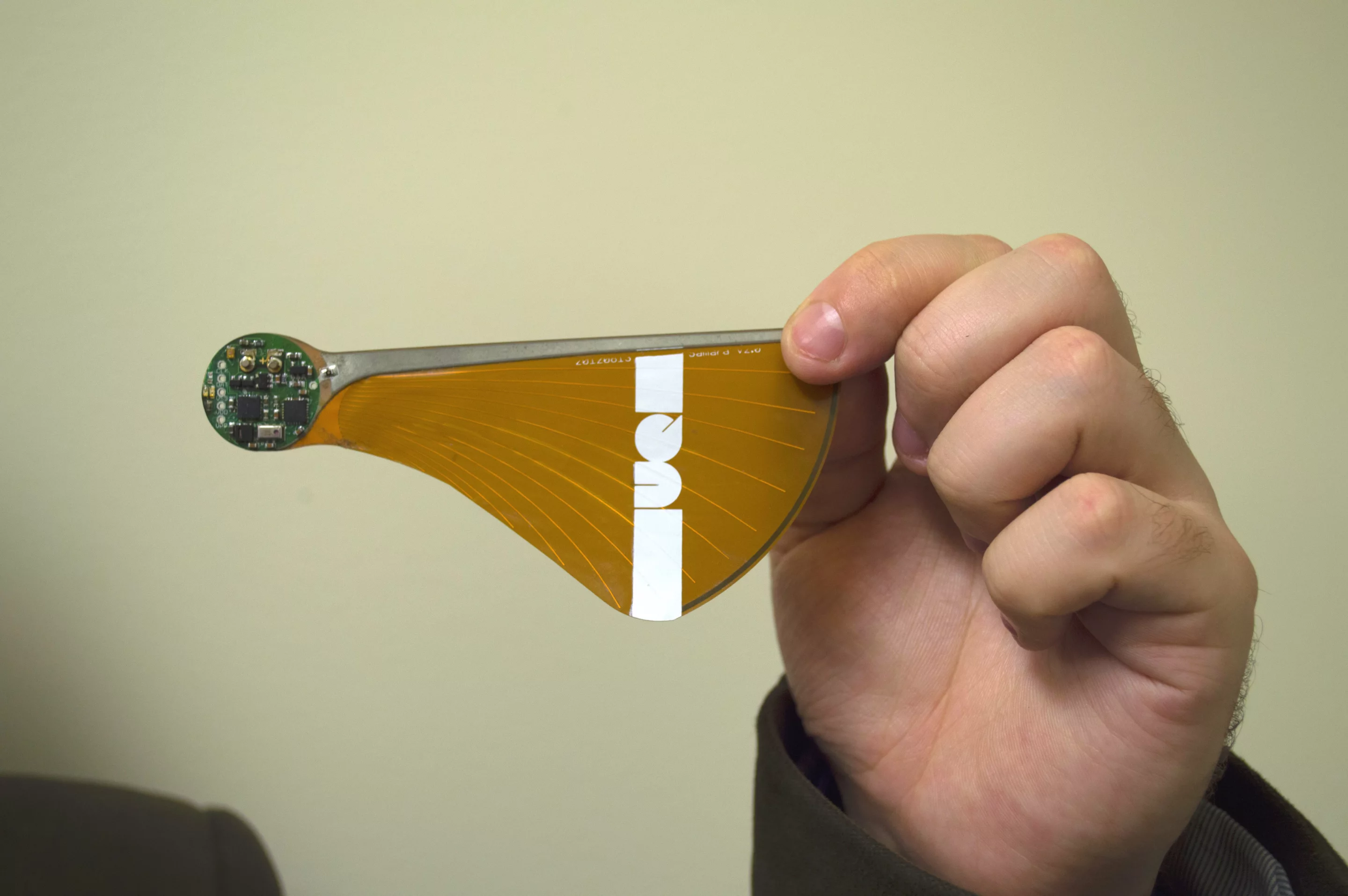The term "UAV" generally leads us to think about expensive, high-tech military drones like General Atomics' Predator, but a Robotics team led by Dr. Paul Pounds at Australia's University of Queensland has created a pair of UAVs that are so cheap and easy to manufacture that they'll literally be disposable, single use items. One's basically a high-tech paper plane, while the other follows the form factor of a maple seed with both designed to help save lives in the event of a forest fire.
The two mini-drones are conceived as self-deploying sensor modules for relaying back environmental conditions in difficult terrain. You could drop dozens of them across a forested area, for example, and have them report back on atmospheric conditions that could indicate the start or movements of a bushfire.
Prototype #1 – the Polyplane

The first prototype will be a familiar design to anyone who ever sat up the back of a university lecture making trouble. Ahem. It's a paper plane, almost exactly the same design I achieved some of my greatest college hijinks with, but with a few clever upgrades.
The first is an avionics system that gives the cellulose Polyplane the capability to self-steer once released from a larger aircraft or drone over the deployment area. It steers itself using small elevon tabs hanging off the back of each wing with an onboard control system steering the craft to its pre-determined destination, or as close as possible.
The second is the way that electronics will be incorporated into the manufacturing process by ink-jet printing the circuit boards directly into the paper stock. After UV curing and microwave sintering, you're left with a very light, foldable circuit board onto which you can glue key components instead of soldering them.
The advantages of paper for a disposable UAV are obvious. It's very cheap and plentiful, it's light and its aerodynamic properties are proven. It's also biodegradable, so that once the disposable UAV has performed its task it will have limited environmental impact.
Furthermore, you might be surprised at just how far a paper plane can travel on the jet stream currents in our atmosphere. Project Space Planes released 100 paper planes from a balloon around 36 km (22 mi) above Germany in 2011, and the planes touched down all over the world, from Europe to Africa, America and even Australia on the strength of the air currents alone.
The disadvantages are also fairly obvious. Chiefly that paper planes are badly affected by rain. But this is unlikely to be a consideration when it comes to wildfire use.
Prototype #2 - the Samara

The second prototype is one of many devices that take their design cue from nature's wonderfully effective monowing helicopter, the maple seed. The Samara uses a more traditional rigid circuit board, attached to a solid leading edge weight that doubles as an antenna, and a flexible wing.
Obviously, its flight is less controllable than the Polyplane, but the maple leaf design means that it floats gently to the ground when released from a height, leaving the electronics undamaged and without requiring expensive parachute or landing systems.
It's interesting stuff, and the cost of avionics and other electronics are coming down to the point where a number of cheap, single use UAV ideas are starting to pop up. Naturally the U.S. military is looking at similar but slightly more expensive designs to drop sensors into war zones, and there's this other nifty single-use aerial camera that can be shot out of a grenade launcher. But it's nice to see more non-military uses of UAV technology coming online as well.








